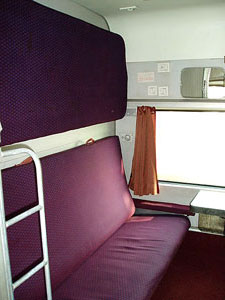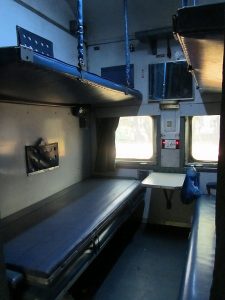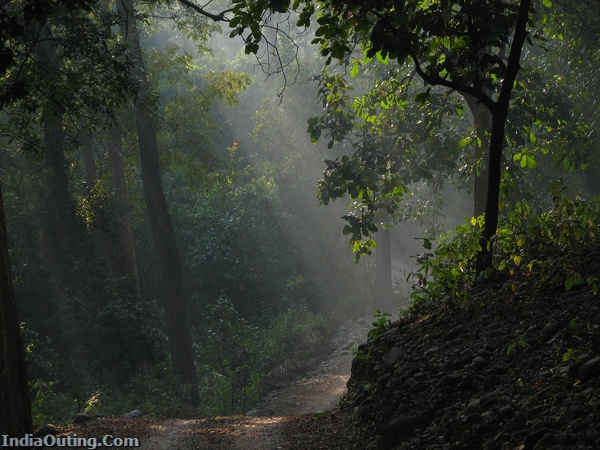 If you spend any amount of time in India, it’s almost guaranteed that you’ll at some point go by train. India’s national railway company is the single largest employer in the entire world, and while the Trans Siberian Railway may be the longest in the world, the Indian versions are nothing short of gargantuan. When you consider how many people make how many trips annually, it is simply staggering. It can also be a little bit overwhelming to figure out how to use the system effectively. To help with that process, here are some general tips.
If you spend any amount of time in India, it’s almost guaranteed that you’ll at some point go by train. India’s national railway company is the single largest employer in the entire world, and while the Trans Siberian Railway may be the longest in the world, the Indian versions are nothing short of gargantuan. When you consider how many people make how many trips annually, it is simply staggering. It can also be a little bit overwhelming to figure out how to use the system effectively. To help with that process, here are some general tips.
 The first step is to know your classes. Depending on the train, there are often a multitude of options. At the top, first class offers a comfortable (though comparatively expensive) ride. Air-conditioned cars, included meals, seats that convert to beds with clean sheets and blankets, and other perks await for you. 2AC class is fair amount cheaper, without sacrificing too much comfort. You still get AC, an electrical outlet, and sheets (though no blanket). Train employees take orders for meals that will be picked up at a later stop, and four berths are compartmentalized together by a curtain. Sleeper class is below that, and is also a pretty livable option. Seats convert to three bunk beds rather than two, and there are no curtains. There is no AC either, but the windows open to allow air (and a lot of noise) to pass through the car. Food is usually more limited to the incessant hawkers that constantly pass through trains shouting as loudly as they can, and quick hops off at stations. For overnight trips, I personally wouldn’t recommend any class lower than these three. Third class unconfirmed offers pretty dismal wooden benches that you will have to fight (quite literally) to get a spot on. There are no beds, though I have heard of people sleeping in the overhead luggage racks. More likely, you will find yourself sitting in a very tight squeeze or standing for the entire night. You’ll save some money, but in my opinion it isn’t worth it unless you’re taking a short ride during non-peak hours on a less-used route.
The first step is to know your classes. Depending on the train, there are often a multitude of options. At the top, first class offers a comfortable (though comparatively expensive) ride. Air-conditioned cars, included meals, seats that convert to beds with clean sheets and blankets, and other perks await for you. 2AC class is fair amount cheaper, without sacrificing too much comfort. You still get AC, an electrical outlet, and sheets (though no blanket). Train employees take orders for meals that will be picked up at a later stop, and four berths are compartmentalized together by a curtain. Sleeper class is below that, and is also a pretty livable option. Seats convert to three bunk beds rather than two, and there are no curtains. There is no AC either, but the windows open to allow air (and a lot of noise) to pass through the car. Food is usually more limited to the incessant hawkers that constantly pass through trains shouting as loudly as they can, and quick hops off at stations. For overnight trips, I personally wouldn’t recommend any class lower than these three. Third class unconfirmed offers pretty dismal wooden benches that you will have to fight (quite literally) to get a spot on. There are no beds, though I have heard of people sleeping in the overhead luggage racks. More likely, you will find yourself sitting in a very tight squeeze or standing for the entire night. You’ll save some money, but in my opinion it isn’t worth it unless you’re taking a short ride during non-peak hours on a less-used route.
Booking seats can at times be simple, and at times bafflingly difficult. The Indian railway system’s website is notoriously poor in English, though may be improving now. If so, you may be able to purchase tickets online and print them out. Alternatively, you can try sites like makemytrip and cleartrip which tack on a small surcharge but offer more reliability. If purchasing online isn’t for you, you can go to any railway station and purchase a ticket for your trip. Be sure that you know all of the relevant details, however: train number, what time it departs, the names of the relevant stations, and all passenger info (name, gender, passport information). You may be asked to supply any of this to the railway employees.
 Tickets are often sold out, so it is recommended to purchase them as far in advance as your travel plans allow you to (which is often a very short time when backpacking in India). If the train you want is booked, go to a station with a copy of your passport and ask if there is a tourist quota.
Tickets are often sold out, so it is recommended to purchase them as far in advance as your travel plans allow you to (which is often a very short time when backpacking in India). If the train you want is booked, go to a station with a copy of your passport and ask if there is a tourist quota.
Finally, I can only recommend that you approach it with an open mind and consider taking the train as part of the adventure, rather than just a mode of transport. You never know what you’ll see on your ride.

